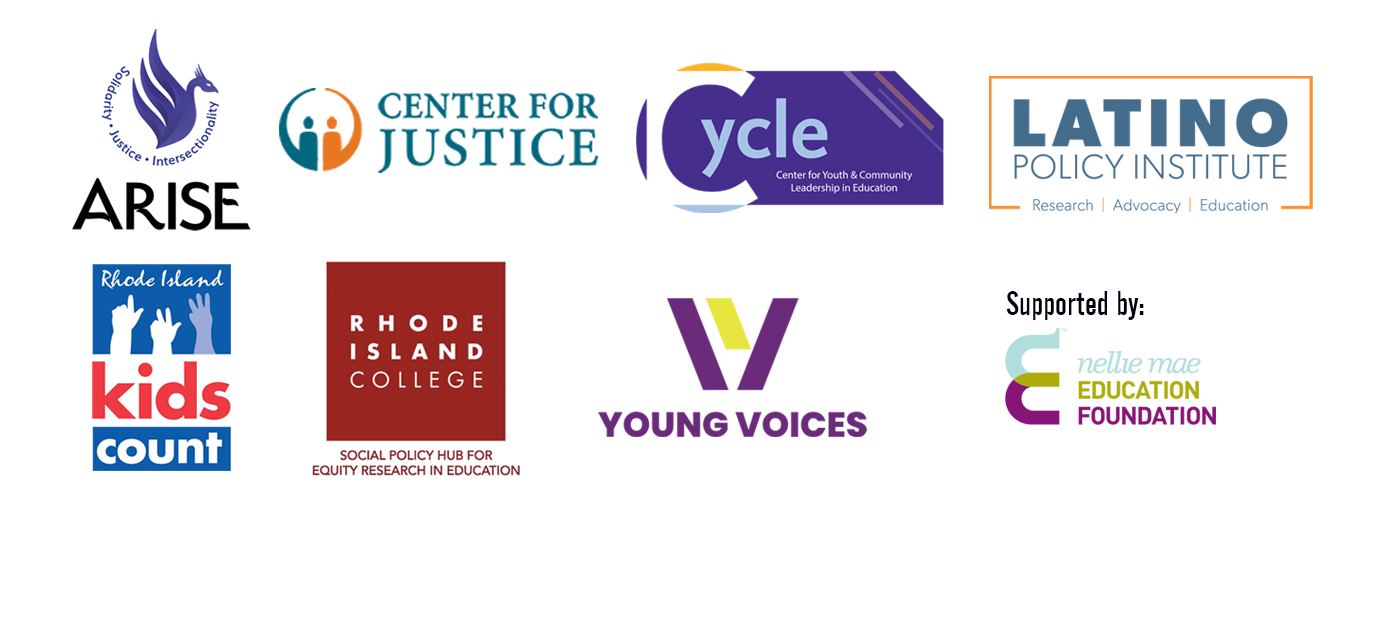
What is ESSER?
And, why is it important?
The Elementary & Secondary Schools Emergency Relief (ESSER) funds are federal dollars that will be invested in public education over the next few years as part of the American Rescue Plan and other federal stimulus packages. Over $189 billion have been specifically allocated for public education through ESSER, $581.6 million of which are for Rhode Island. In summer 2021, we produced fact sheets (Spanish translation) outlining how much each individual school district in RI was estimated to receive.
These funds provide us with an opportunity to invest in not just relief from what we’ve missed or lost during the COVID-19 pandemic, but also in setting up our school systems for success in the future. Our fact sheet also highlighted that funds can be used for a wide variety of supports and improvements for our schools. This includes things like curriculum improvements and enrichment, social emotional and academic student supports, family engagement and student leadership, building renovations, and more.
ESSER and community engagement
We believe that the people closest to and most impacted by the challenges we face in our schools should have a direct say over how we look to address them. Accordingly, federal guidelines require local school districts and states to seek and incorporate community engagement in determining how to use ESSER funds. That means students, families, and frontline educators–those of us who are closest to the challenges we face in our schools–-should be engaged in decisions about how ESSER money is used.
While districts have all been planning for how to use these funds and have shared plans with the RI Department of Education (RIDE), there is an expectation that plans will be monitored and can be modified every 6 months. While many of these funds are being used immediately, they do not have to decide and commit to how funds will be used until 2023 and districts can request a one-year extension to spend the money. All of this means communities can and should continue to have an influence over how they are used.
What we’ve experienced/found in RI
In February and March 2022, over 500 people responded to a community survey we distributed. Our survey engaged mostly students (59% of respondents), but also included parents (17%), educators (10%), and other community members (14%). The majority of respondents were from Providence (52%), with others from Cranston (22%), Pawtucket (14%), Central Falls (4%), and other communities (8%) throughout the state.
Of the respondents to our survey, 73% reported that they had not been informed or engaged about ESSER funds in their school district. Over 81% said they did not know who to contact in their district to discuss the use of these funds. These overwhelming response rates underscore how little awareness there is about such an important opportunity to support and improve public education in RI.
In addition, as our team did research on trying to identify promising practices for community engagement about ESSER spending, throughout the country we were met with difficulty finding examples that went beyond traditional forums and surveys. This is a trend we have identified not just in RI, but nationally.
General Resources
Elementary and Secondary School Emergency Relief Fund Tracker
Federal Coronavirus Relief Programs – Federal Grant Programs
CARES Act Education Stabilization Fund: Background and Analysis
NBER WORKING PAPER SERIES FEDERAL AID TO SCHOOL DISTRICTS DURING THE COVID-19 RECESSION
Financial Trends in Local Schools’ Covid-Aid Spending – FutureEd
How Local Educators Plan to Spend Billions in Federal Covid Aid – FutureEd
How States Are Using Federal Funds for Learning Recovery – FutureEd
RI ESSER Resources
- ESSER Community Fact Sheet
- ESSER Plan – Back 2 School Rhode Island
- US Department of Education Approves Rhode Island’s Plan for Use of American
- Rescue Plan Funds to Support K-12 Schools and Students, Distributes Remaining $138 Million
- Rhode Island Allocations to LEAs under the ESSER & GEER FundsPDF
- Rhode Island ARP ESSER State Plan Highlights (PDF)
- Investing in the Future: How Rhode Island Districts are Spending Federal COVID-19 Funding and Why It Matters – Annenberg
- COVID Relief Funding in Schools: Promising Practices for Community Engagement (Zoom Recording)
- COVID Relief Funding in Schools: Promising Practices for Community Engagement (Recap)
- COVID-19 Impact and Recovery: An Equity Analysis Of Rhode Island School Districts’ Planned Use Of ESSER III Funds. (Spanish)
Materials for Community Members
What can/should we do?
We encourage students, families, and community members in RI to get more engaged in how their school districts are using ESSER funds. And, we encourage more innovative practices for districts to remove barriers to engagement and support and facilitate more students, families, and community members to be part of processes that determine how funds are used.
Resources for Teachers and Administrators
The Ultimate Guide for ESSER Funding and Planning – Education Elements
ESSER funds and how to make the most of them for your school
Federal COVID Funding for Schools: What Educators Need to Know
National Math and Science Initiative – A Guide To Using COVID Relief Funds [+ Downloadable Workbook]
Resources on Civic Engagement
Public School Boards Demystified: How Parents Can Influence the Board’s Decisions
Resources to Support Civic Engagement – History-Social Science (CA Dept of Education)
Elevating Student Voice in Education – Center for American Progress
Community information and civic engagement – The Journalist’s Resource
How to Specifically Engage with ESSER
Roadmap for Student Engagement in ARP ESSER Planning – The Aspen Institute
Parsing the Evidence Requirements of Federal Covid Aid – FutureEd
What Congressional Funding Means for K-12 Schools – FutureEd
Supporting students and promoting economic recovery in the time of COVID-19
The ESSER Funds: Bargaining and Advocacy Guidance for Safe and Equitable Schools | NEA.
Joint Comment on Oversight of American Rescue Plan Act ESSER Funds
Brief: Use ESSER relief funds for early childhood programs – First Five Nebraska
What Do Families and Parents Need to Know (And Do) About ARP ESSER | Rethink Together



